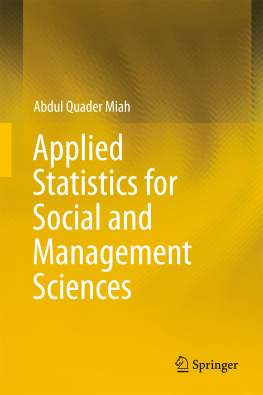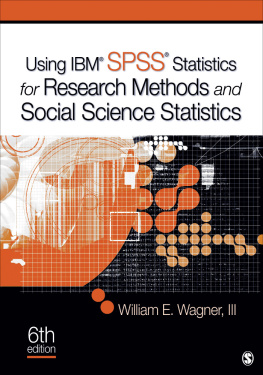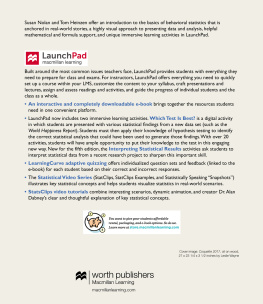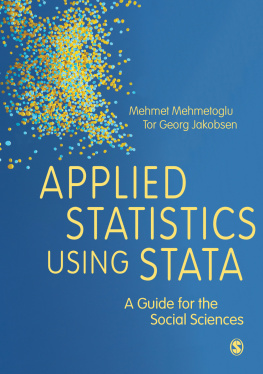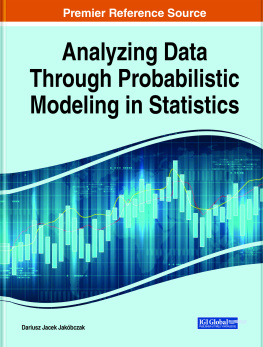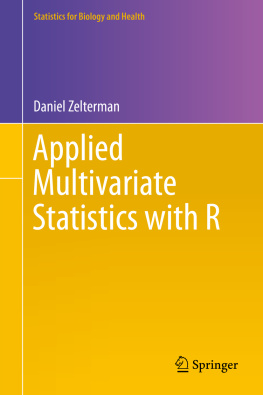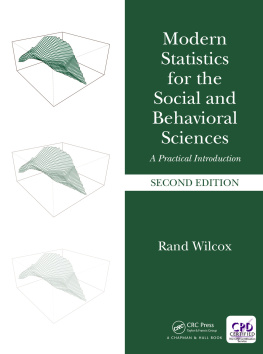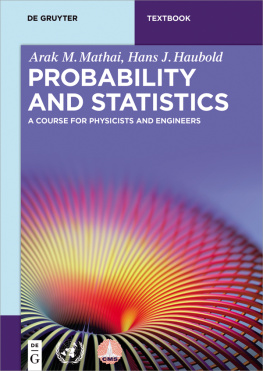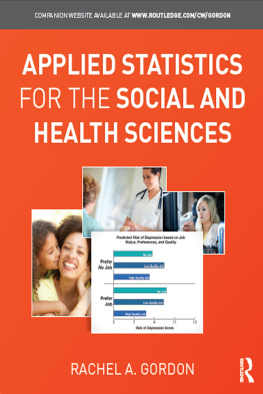1.1 History
The subject statistics as we find it today has emerged from three different sciences. The first science was Staatenkunde which involved a collection of information on history, resources, and military expertise of nations. This science developed from the felt need of gathering information on resources and other aspects of the states. For example, Aristotle gathered and compiled information on 158 city states.
The second science was the political arithmetic dealing with population estimates and mortality. The present-day demography derived its roots from this science. This science developed gradually but its refined methodology has developed only recently.
The third science was a calculus of probability dealing with mathematical theorems and techniques for problems involving uncertainty. The theory of probability is the foundation of modern statistics.
1.2 Statistics
Statistics may be defined in several ways. Some authors say that statistics are classified facts, especially numerical facts, about a particular class of objects. Others say that statistics is the area of science that deals with the collection of data on a relatively small number of cases so as to form conclusions about the general case.
Another definition says that statistics is the science of collecting, simplifying, and describing data as well as drawing conclusions. Wikipedia says that statistics is a mathematical science pertaining to the collection, analysis, interpretation, and presentation of data. Statistics is used by a wide variety of academic disciplines.
Statistics has two distinct branchesdescriptive statistics and inferential statistics. Descriptive statistics deals with collection, summarization, presentation, and description of data and is sometimes called the primary analysis. Inferential statistics deals with further analysis of data in order to draw conclusions and is sometimes called secondary analysis.
1.3 Contents of Statistics
In the above section the definition of statistics has been outlined. In this section the contents of statistics is summarized. Statistics deals with data relating to
collection,
summarization,
presentation,
description, and
analysis.
It is evident that any exercise in statistics concerns data. Thus data are the central requirement of any statistical work. Hence comes the question of data and their collection.
Data may be collected from secondary sources such as census reports, other documents, previous studies, etc. Data that are not readily available need to be collected from the field. There are recognized ways/techniques of data collection from the field. The important ones include
structured/semi-structured interviews,
standardized questionnaires,
observation schedules,
direct measurements, and
experiments.
In the structured/semi-structured interview, the points of interest on which information is sought, are noted on a piece of paper. Then questions are asked to the respondents or a guided discussion is held with the respondent. The points of discussion are noted while discussing. Afterwards the information is summarized. Sometimes, group discussions are arranged and the outcomes of the discussions are recorded.
A more formalized way of collecting data from the field is the use of standardized questionnaires. A wide variety of information can be collected through this technique. Questions on selected topics are previously formulated. With the questionnaire in hand, the survey personnel go to the field and the preset questions are asked to the respondent exactly in the same manner they were set. The answers are recorded in the manner also previously prescribed in the questionnaire.
Some of the information can be obtained by simple observations, for example, housing conditions. In such cases an observation schedule may be used. The prescribed schedules (different for different purposes) are used in order to have uniformity in the recordings. This facilitates subsequent data processing and analysis.
Sometimes direct measurements of data are possible. If possible, this gives the most accurate information. Measurements of plot size, house size, road width, etc., are examples where direct measurements are possible. Direct measurements are usually done for data generated in laboratory experiments as well as in some field experiments. Devices such as scales, tapes, surveying equipments, etc., are used in measurements. Although relatively little judgment is involved in this technique, the accuracy of measurements depends on the skills and efficiency of the person recording the measurements.
Considerable data is also generated from experiments conducted by researchers in the fields, laboratories, and manufacturing processes (see ).
1.4 Data
Based on the source, data may be classified as secondary and primary data. Secondary data are those that are obtained from the available reports, records, and documents. Primary data are those that are not readily available and as such are collected from the field or experiments. In any statistical problem when secondary data are used, care should be taken to see their relevancy and accuracy.
On the basis of the use of units of measurement or type of measurement, data may be classified as
categorical,
ranked, and
metric.
Categorical data are those in which individuals are simply placed in the proper category or group, and the number in each category is counted. Each item must fit into exactly one category.
Example 1
In the above example, male and female are categories. Only their frequencies are counted. No other measurement units are used to identify these.
Ranked data is also categorical data. But this type of data has order among the categories. In addition to categories, ranking or ordering is inherent in the data.
Example 2
People are categorized on the basis of income levels such as low, lower middle, middle, upper middle, and high income. The low income people represent the lowest category. The high income people represent the highest category. The intermediate ones follow accordingly. These are ranked data. Although low, lower middle, middle, upper middle, and high income are categories, some ranking is inherent in the categories.

